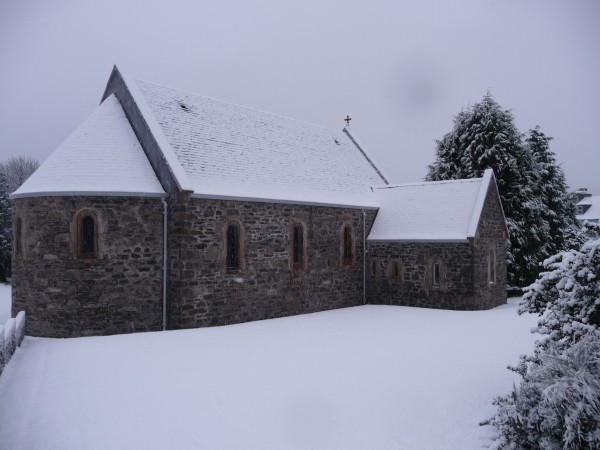
History of St. Margaret's Church
Before St Margaret's It is one of history's ironies that Mid-Argyll, once the hub of the kingdom of Dalriada, heartland of Celtic Christianity, should in the 20th century have had no Catholic Church.
It was at Dunadd that Columba crowned Aidan as the first Christian monarch not just in Scotland but in the whole of the British Isles.
The sixth century was a spiritually rich one for this part of the world, blessed as it was with the arrival of St Columba from Ireland.
As he took his mission the length and breadth of Argyll, settling eventually on Iona where he could no longer see the homeland which tugged at his heart strings, Christian communities grew.
Many of our place names today reflect those Christian roots. Kilmory, Kilmichael, Kilmartin, Kilberry... the list is endless and each one reminds us that a chapel (kil means cell or chapel) was built there and that our ancestors worshipped Christ according to Celtic tradition.
In time, it was to Rome that the whole church looked for leadership. But there were abuses of power and often it was the poorest people who suffered most - the poor runrig farmers, for instance, whose widows had to give colpach (their best cow) to the priest to have a Mass said for the dead.
In time, the Reformation came to Scotland and in Argyll, different clan leaders demanded loyalty of their followers in secular, military and religious matters. The MacDonalds remained Catholic; the Earls of Argyll - particularly during the dreadful times of the civil wars - were perhaps guided more by politics than by faith when it came to pledging allegiance alternately to the Catholic, Presbyterian and Episcopal factions.
The Seventh Earl, who succeeded to the title in 1584, who was granted lands in Kintyre in 1607 for supplanting the MacDonalds and creating a Presbyterian Lowlanders settlement there, converted to Catholicism later in life and served the King of Spain. The Eighth Earl of Argyll, Archibald Campbell, was known as both the Covenanting Earl and Cross Eyed Archibald and he, too, changed sides (and religious adherence) several times.
Many of the people of Argyll remained steadfast in their Catholic faith, however, despite the politicking infidelities of their chiefs.
They were helped by missionaries like Patrick Hegarty, who came to Kintyre from Ireland on the 15th of July, 1624, to bring spiritual help to the people of Argyll. With his companions, he landed on the island of Sanda where he preached, baptised four children and confessed 40, including fishermen from Kintyre.
The missionaries separated and for the next two months, Hegarty hid in caves and preached at night, sometimes saying two Masses ten miles apart before daybreak.
He crossed to Arran, where there had been no priest since before the Reformation the previous century, and then spent time in Gigha, Islay, Colonsay and parts of mainland Argyll.
Patrick crossed back and forth to Ireland to escape persecution and to raise funds for his mission. By the time he died in 1647, having spent some time in prison as well as many sleepless nights in the hills of Argyll, he had reached out to thousands who wished to stay within the Catholic faith. After all the horrors of the civil wars, the Duke of Argyll helped to put William of Orange on the throne and although there was political peace, there was little spiritual peace for the Catholics of Argyll.
Article written by Marian Pallister